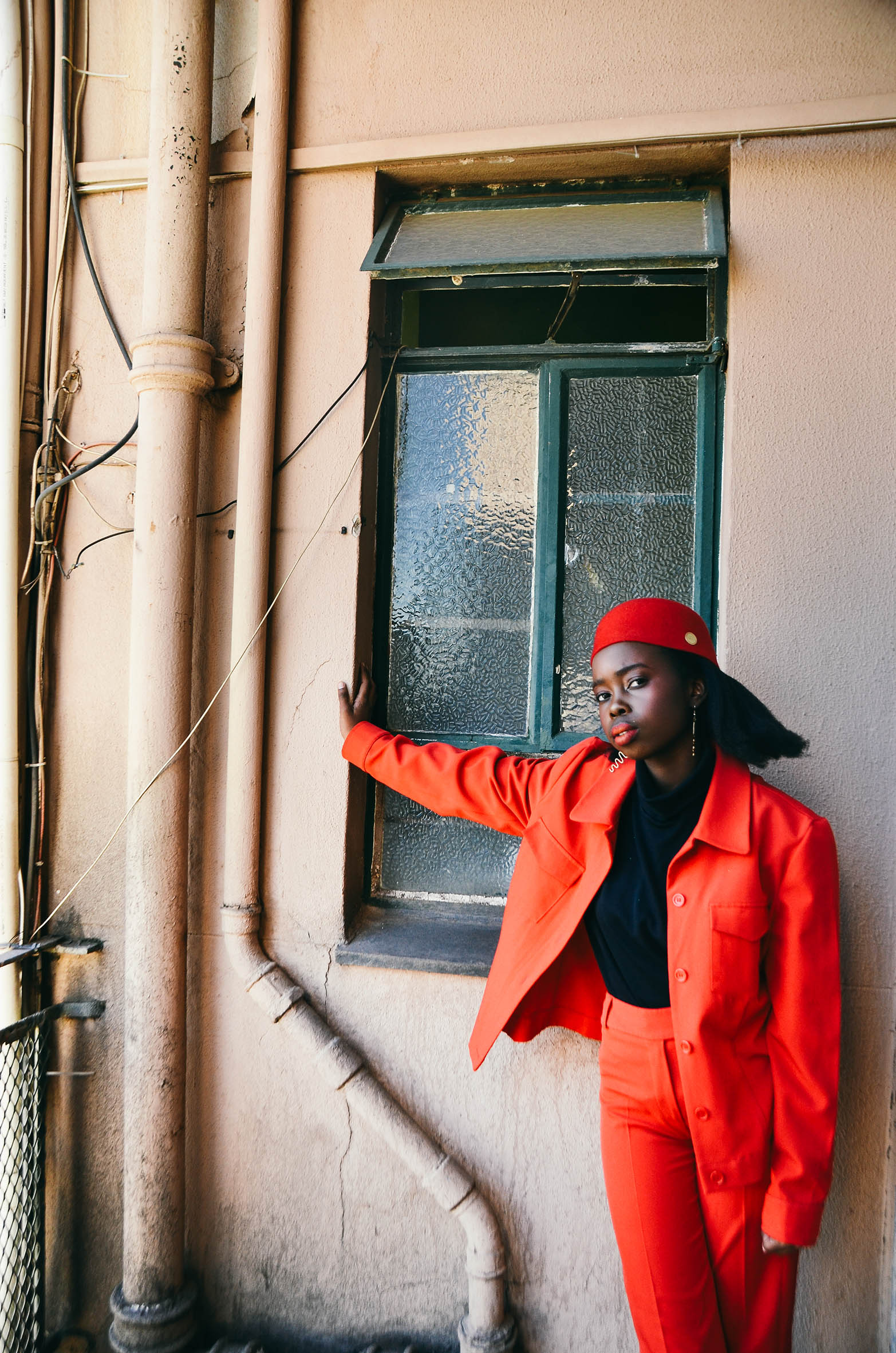A South African story: Nomasonto: Sundays Best may be a short film for a festival but its pretty close to the real thing
Nomasonto is striking. A teen with stunning skin and an enviable demeanour. She is without boundaries. Every move she makes is with intention. She holds your gaze and calls you in.
Nomasonto: aNguni name meaning “daughter born on a Sunday”. We are told in the first moments of a short film that she grew up in the East Rand and loves the city of Johannesburg.
Played by 19-year-old Miya Twala, Nomasonto: Sunday’s Best charts a tale about the city of Johannesburg. The innovative fashion film was conceptualised by a team of creatives who were tasked by Bokeh South African International Fashion Film Festival to make a film that shows off the City of Gold.

“We wanted to tell a relatable story, a story that’s real and as close as possible to a real experience of downtown Jozi. It was important to tell this story in a language many South Africans (possibly other Africans too) could understand,” said Sizwe Mbiza, the film’s writer, director and cinematographer.
“Often times creators in South Africa neglect telling stories in this way, but we thought it was necessary to tell a South African story in a language we all understand. The country is 80% black/African, so it only makes sense to tell stories that the majority can relate to.”
As an experimental genre, the fashion film began as a series of small, audio-visual pieces that essentially served as ads, with the intention of transforming the way brands communicate their values. In a research report on the effects of fashion films, Ángela Aguinaco Martín explores the genre’s genesis, how it progressed and aspects of its influence.
Martín writes that fashion films “bridge the gap between reality and fantasy. The creative’s use of tech, their collaborations and their futuristic approach to video have created a powerful intersection between feature music video, documentary and fashion.”
Mbiza’s words speak to the core of Martín’s findings —that fashion films may have begun with large fashion houses like Dior and Chanel,but recently, the genre has returned to Earth in a simple but bold blend of fashion, art and social commentary.
Nomasonto’s story may be a short one, but the two minutes are a beautiful glimpse into a vibrant city and its thriving culture. Narrated by Jo’burg-based storyteller and content creator Liziwe Kwanini, popularly known as MamThug, Nomasonto tells us about how her father would get dressed in his “Sunday best” to explore the city.
Exploring various themes and ideologies using styling and imagery, Kwanini believes this film captures the feelings and energies she gets when Jo’burg shows her teeth.
“Like Nomasonto, I have found gems hidden in pockets of Jo’burg. She isn’t as ugly as they have painted her out to be. I love the way it laughs, the way it treats me, its dignity.”
Mbiza’s dream of seeing a young woman who wanted to be a sapeur informed much of this film. Like the sapeurs of Brazzaville and Kinshasa, everything about Nomasonto is dandy, colourful, audacious and daring.
Mamello Mokhele, a recent fashion graduate, highlights Nomasonto’s bold sense of style with her use of make-up. “I used some of the latest editorial make-up trends to carry through the idea of fearlessness. After seeing the clothing, I decided on clean, dewy skin with pops of bright colour, each adapted to suit the different looks. Working on Miya Twala’s face was a treat.”

Mokhele’s talent for highlighting Twala’s features is clear, bringing the outfits to life. We watch her switch from a gorgeously tailored pastel pink suit, donning a Simon and Mary hat of the same colour, to a patterned two-piece matched with green, glittery lips. As Twala, who did the styling herself, who portrays Nomasonto, we are given the pleasure of enjoying the character alongside the cityscape.
In a country with stories that still tend to be haunted by a painful history, it’s always refreshing to encounter stories that celebrate joy. Mbiza expands on this idea through film. “Young black filmmakers like myself lack the opportunities, the resources, and the know-how to tell their stories on a higher level. On the other hand, the lack of resources can push creators to use what they have to come up with creative ways of telling stories,” Mbiza says.
He also comments on how many creators in the country have been affected by globalisation and says much of the work created is hybridised.
“There is absolutely nothing wrong with being inspired by the world,but I honestly feel that it has to be true to who you are personally and culturally, and not an imitation of what is happening somewhere else in the world.”
Nomasonto: Sunday’s Best has been nominated for a Bokeh Emerging Creatives award, and will be shown at the fashion film festival, taking place from September 20 to 29. Having begun in 2014, the festival brings together creatives in the film, fashion, artistic and related technical industries twice a year, in Johannesburg and Cape Town.
The film is on YouTube